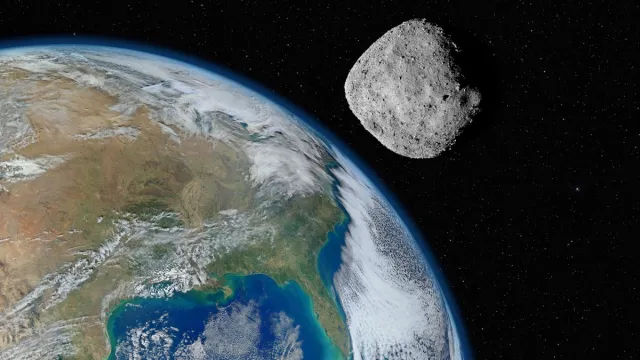NASA Says “Lost” Asteroid Could Collide With Earth in October

We may only be two days into the new year, but NASA scientists are already anticipating an active forecast of celestial events in 2024—everything from supermoons to meteor showers to solar eclipses. Those will be fun to see, but what about something potentially more serious, like an asteroid collision? A rare astronomical phenomenon is predicted to occur during the latter half of 2024, when a “lost” asteroid known “Asteroid FT3” makes its way into Earth’s orbit in October. And while the possibility of impact is extremely small, the asteroid does have the potential to “cause a lot of regional destruction” to a continent if it strikes, NASA experts warn GB News.
RELATED: “Devil Comet” With Horns Is Racing Toward Us—Here’s When and Where It Arrives.
According to the NASA website, an asteroid is defined as a “relatively small, inactive, rocky body” that orbits the sun, which sits at the center of our solar system. An asteroid can be made up of a million tiny, little particles like clay rocks, silicate materials, and nickel-iron materials such as metallic. They can be dark in color, and range in composition as well as temperature.
For those who aren’t well-versed in astronomy, an asteroid collision may sound like a terrifying or civilization-ending occurrence—but they actually happen pretty frequently. NASA estimates that an “automobile-sized asteroid” strikes Earth’s atmosphere once per year. The difference here is that those massive rocks typically burn up before making landfall. Asteroid FT3, on the other hand, could potentially hit the planet at its full size.
First found in 2007, Asteroid FT3 was later categorized as a “lost asteroid” when it vanished into the stratosphere, causing scientists to lose track of its flight path, per GB News. Scientists have since regained connection with the asteroid, and while the original strike date was predicted to be March 3, 2030, new data shows a potential impact on Oct. 5 of this year.
Asteroid FT3 has the power to potentially “release the energy equivalent to the detonation of 2.6 billion tons of TNT,” GB News explains. An impact of this magnitude could disrupt an entire continent, but scientists say it would not result in total global extinction—if that’s any comfort.
What should be more comforting is that the chances of this happening are tiny. According to GB News, NASA puts the probability of a collision at 1 in 11.5 million. With that in mind, you can probably rest easy—but stay tuned to see if NASA has any more urgent updates in the lead-up to October.
RELATED: For more up-to-date information, sign up for our daily newsletter.
- Source: NASA: Asteroid Fast Facts
- Source: NASA: Asteroids: Facts